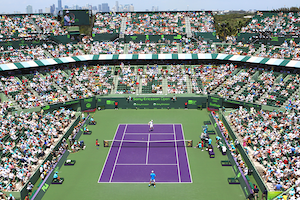Anticlimactic appears the operative word to describe ATP Masters tournament in Rome. A rash of retirements, five in total, plagued the event with Novak Djokovic, twice the beneficiary. In the quarterfinals, Spaniard Nicolas Almagro, a multiple clay court titleholder, retired against Djokovic in the second set due to a wrist problem. After the euphoria of defeating Roger Federer in the quarterfinals 7-6, 7-6, Radek Stepanek suffered an overnight transformation. In the semifinals, Stepanek cited dizziness and weakness for his stoppage of play against Djokovic. Capping off a bizarre day, Andy Roddick also withdrew from his semifinal match in the first set due to back spasm. In the first round, Juan Martin Del Potro of Argentina retired in the third set against Andy Murray with back problems in a match where the two traded insults. Murray alleged that the Argentine made disparaging remarks about his mother. In the third round, Fernando Gonzalez of Chile, a winner on clay at the BMW Open the week prior, was forced to retire with a right leg injury.
Controversy has arisen because in the past, the clay period has been spread out over seven weeks with players normally choosing to take two weeks of rest. This year, in order to accommodate the August Olympic Games, the ATP altered the schedule, shortening it by one week. Rafael Nadal has vociferously expressed his displeasure over the curtailed calendar, fearing that the recovery time between tournaments would be inadequate. Nadal’s concerns were validated this week when feet blisters contributed to his lost in the second round to Juan Carlos Ferrero. As a result, Nadal was unable to defend his title in Rome. This marked only the second defeat for Nadal in 105 clay court matches in nearly five years. The penultimate leg of the clay court season is in Hamburg this upcoming week. Subsequently, the players will have a week to recuperate before stepping on the court at Roland Garros. With so many athletes having to contend with injuries and the grinding nature of clay court play; this year’s French Open may be a case of the survival of the fittest.




